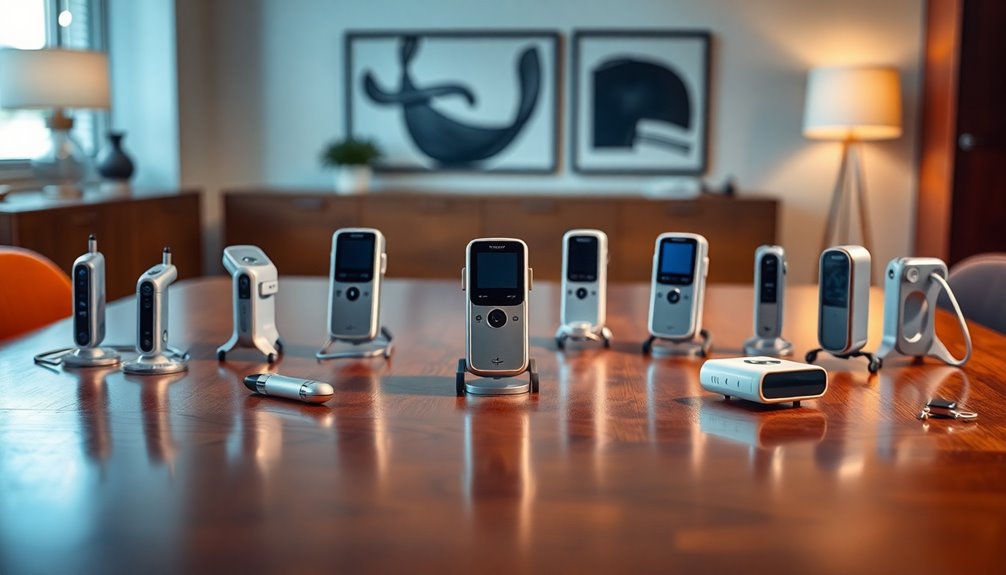If you're looking for promising private placement memorandum (PPM) opportunities in the medical device sector, consider companies like Garwood Medical Devices, which targets orthopedic infections, and Parasym Health, focusing on neuromodulation for inflammation and stress. EvoEndo innovates endoscopy, while Francis Medical advances urology treatments. BiVacor is making strides with its artificial heart for end-stage heart failure. With a market growth projection to $671.49 billion by 2027, there's significant investor interest. Don't miss out on these ventures and insights to discover even more exciting opportunities within the ever-evolving medical technology landscape.
Key Takeaways
- Garwood Medical Devices offers BioPrax™ Technology, a non-invasive solution for orthopedic infections, enhancing growth potential in the orthopedic market.
- Parasym Health's neuromodulation technology improves long-COVID symptoms and has established credibility with over 3 million treatments administered.
- EvoEndo's FDA-cleared Single-Use Endoscopy System revolutionizes unsedated gastroenterology procedures, aiming for broader access in pediatric care.
- Francis Medical's Vanquish® System utilizes thermal water vapor for prostate cancer treatment, focusing on enhanced patient quality of life.
- BiVacor's Total Artificial Heart addresses end-stage heart failure, with promising initial human implantations marking a significant advancement in cardiac care.
Garwood Medical Devices

As orthopedic implant infections become increasingly prevalent, Garwood Medical Devices stands out with its innovative BioPrax™ technology. This groundbreaking device utilizes low-voltage electrical currents to disrupt and kill bacteria on metal implants, effectively preventing and treating infections without needing to remove the implant. Patented by the University at Buffalo and Syracuse University, BioPrax™ is exclusively licensed to Garwood Medical, showcasing a significant leap in medical technology.
Every year, hundreds of thousands of people in the U.S. suffer from orthopedic implant infections, leading to painful and costly treatments. The annual cost of treating these infections reaches an estimated $15 billion, and incidents are projected to nearly triple by 2030 due to an aging population. Additionally, Garwood Medical collaborates with top talent from UB's biomedical engineering programs to drive innovation in its technologies.
Traditional treatments can result in severe complications, including joint fusions and amputations. BioPrax™ offers a non-invasive alternative by creating a chemical reaction that raises local pH levels, effectively eradicating infection.
Garwood Medical's partnerships with research institutions like the University at Buffalo enhance its development efforts, ensuring the technology moves swiftly through testing phases. With its FDA Breakthrough Device designation, Garwood Medical is positioned for growth and impact in the orthopedic market.
Parasym Health
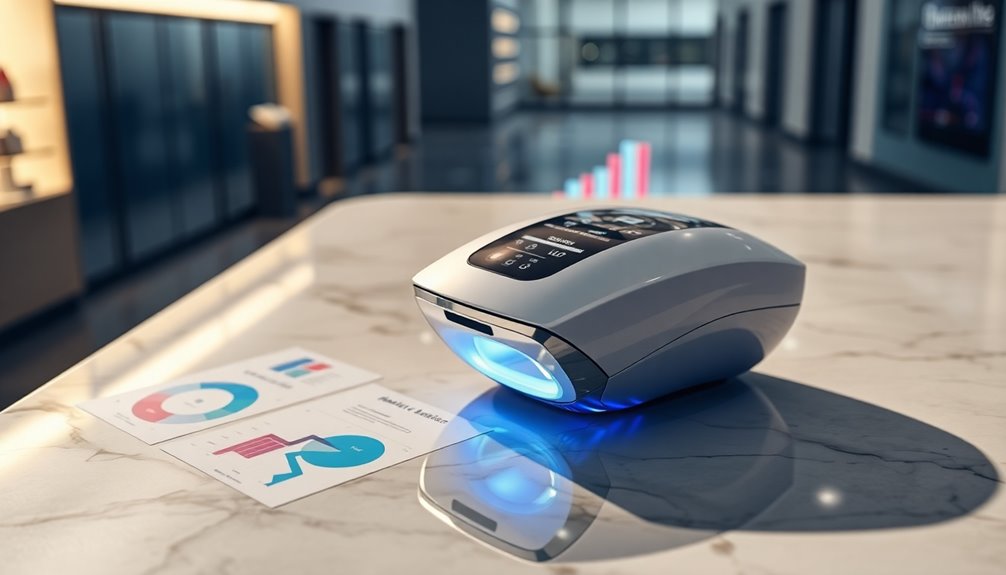
Leveraging cutting-edge neuromodulation technology, Parasym Health offers a non-invasive solution that targets the vagus nerve through transcutaneous auricular vagus nerve stimulation (tVNS). This device delivers precise microcurrent electrical impulses via the tragus of the left ear, activating the parasympathetic nervous system. As a result, it effectively reduces inflammation, stress, and anxiety while significantly improving heart rate variability (HRV). Clinical trials have shown remarkable effectiveness, particularly in alleviating long-COVID symptoms like chronic fatigue and brain fog. Trusted institutions such as Harvard and UCL have adopted this technology, ensuring its credibility. Patients typically report "very significant improvement" after just ten sessions, with no serious adverse events recorded across over 3 million treatments. Furthermore, over 1 million individuals in the UK report Long-COVID symptoms, highlighting the urgent need for effective interventions. Parasym Health's device is both accessible and affordable, designed for easy home use with adjustable stimulation parameters. It's CE-certified and offers a 30-day risk-free trial, making it an attractive option for investors. With ongoing collaborations with leading clinics and research partners, Parasym Health is positioned at the forefront of bioelectric medicine. This innovative approach not only enhances patient well-being but also represents a promising investment opportunity in the evolving medical device landscape.
EvoEndo
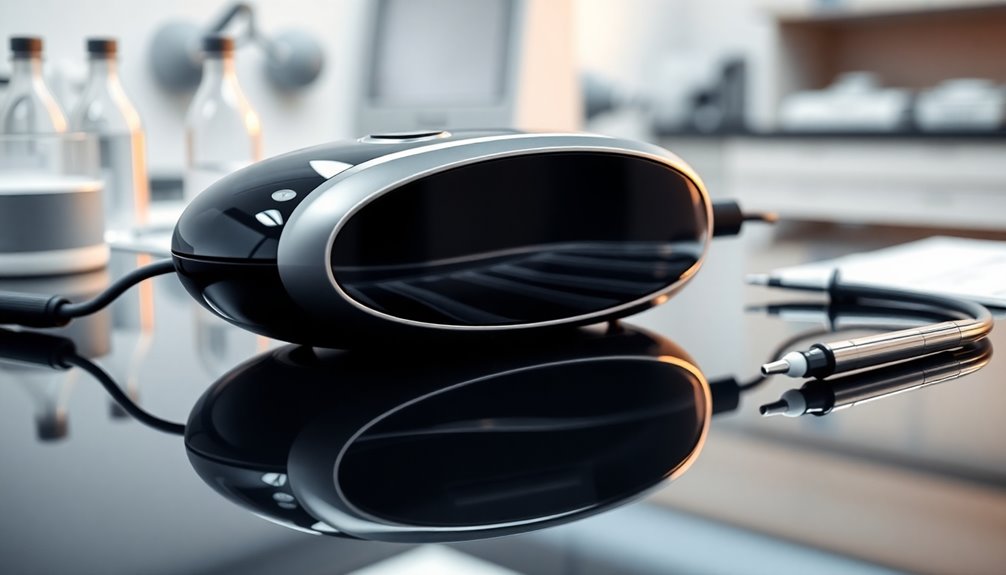
Innovation in medical devices is transforming how endoscopic procedures are performed, and EvoEndo, Inc. is at the forefront of this revolution. This company is dedicated to developing systems for unsedated endoscopic procedures, primarily focusing on pediatric and adult gastroenterology.
With FDA 510(k) clearance for the Single-Use Endoscopy System achieved in February 2022, EvoEndo is making significant strides. Their flagship product, the EvoEndo Model LE Gastroscope, allows for flexible, sterile, single-use endoscopes to be inserted either orally or transnasally. This system enhances patient comfort with a portable video controller and a VR comfort kit, effectively reducing the need for general anesthesia. This not only makes procedures safer but also more efficient, while also eliminating risks of cross-contamination associated with reusable devices.
EvoEndo's technology is shifting endoscopic procedures from ambulatory suites to office-based environments, improving resource utilization and offering a cost-effective alternative to traditional sedation-based methods.
Currently available in 25 hospitals, the company aims to expand access nationwide, especially in pediatric care. Supported by substantial investments, EvoEndo is poised to establish a new standard for upper GI endoscopy, reducing both patient and provider apprehension associated with sedation.
Francis Medical
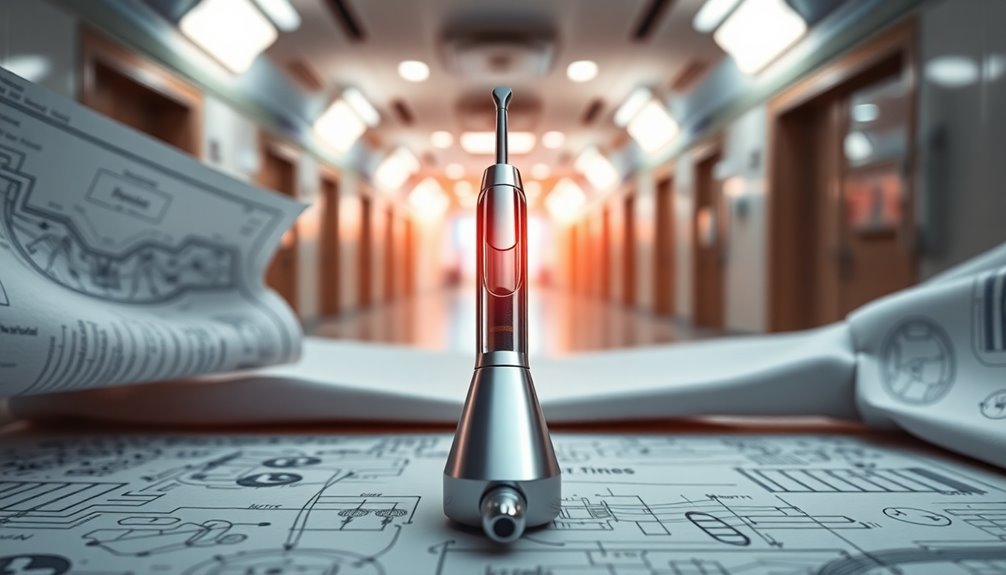
Francis Medical is revolutionizing urological cancer treatment with its pioneering approach to minimally invasive procedures. Founded in 2018 and headquartered in Osseo, Minnesota, the company, originally known as NxPHASE Medical, is dedicated to addressing the challenges of urological cancers, particularly prostate cancer. Named in honor of the founder's father, who succumbed to prostate cancer, Francis Medical aims to make a significant impact in this area.
Their innovative Vanquish® Water Vapor Ablation System utilizes convective thermal water vapor technology for cancer ablation, offering a simple transurethral procedure. This technique not only minimizes invasiveness but also reduces the likelihood of unwanted side effects like urinary incontinence and erectile dysfunction. Additionally, Francis Medical is currently in Series B funding to support its growth and product development.
With a total funding of $77.68 million, including a recent $55 million Series B round, investors like Boston Scientific and Coloplast are backing this promising venture. Ongoing clinical trials, including the VAPOR 2 trial, further validate the effectiveness of their solutions, aiming to enhance the quality of life for patients facing prostate, kidney, and bladder cancer.
BiVacor
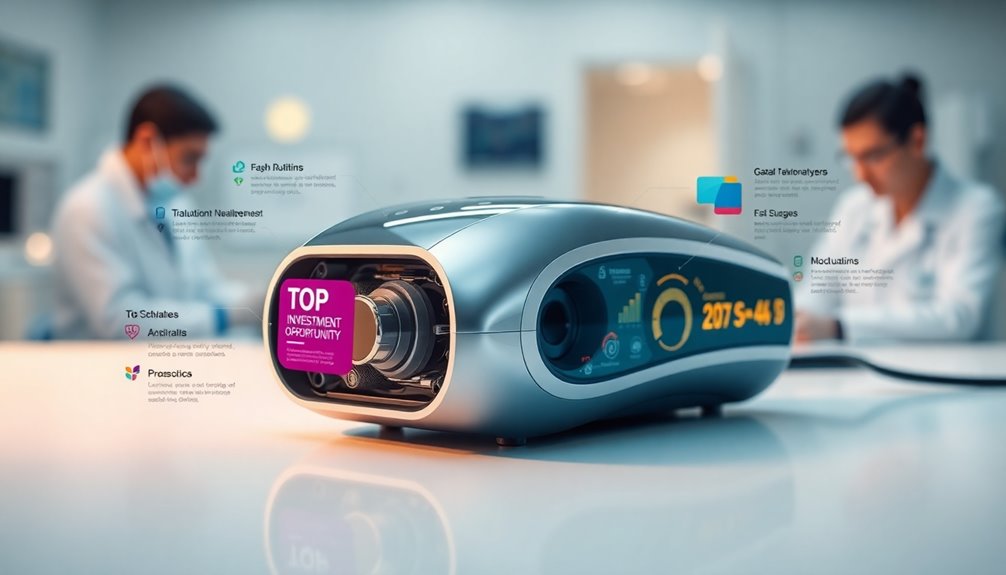
BiVacor is making strides in the field of mechanical circulatory support with its groundbreaking Total Artificial Heart (TAH) designed for patients with end-stage heart failure. This innovative device is constructed from titanium and utilizes MAGLEV technology, featuring a single moving part—a magnetically levitated rotor. Its rotary blood pump design is electro-mechanical, and the valveless architecture includes a double-sided centrifugal impeller, ensuring efficient blood flow.
Having successfully undergone its first human implantation on July 9, 2024, during an FDA Early Feasibility Study, the TAH serves as a vital bridge to heart transplants. The study aims to assess its safety and performance, with collaboration from renowned institutions like The Texas Heart Institute and Baylor College of Medicine. This first successful human implantation marks a significant milestone in the advancement of artificial heart technology.
With heart failure affecting over 26 million people worldwide, the need for effective mechanical circulatory support is urgent. BiVacor's TAH addresses this gap, potentially benefiting up to 100,000 patients in the U.S. alone.
Founded in 2008 and headquartered in California, BiVacor has raised $50.75 million in funding, positioning itself as a promising venture for private investors in the medical device sector.
Venture Capital Firms

As the demand for advanced medical devices continues to rise, venture capital firms play a crucial role in fueling innovation within the sector. They actively seek out promising startups and established companies, providing essential funding and expertise to help them grow. For instance, TMCx, part of the Texas Medical Center, has facilitated 61 deals since 2013, focusing on areas like minimally invasive surgeries and AI-connected devices. U.S. Venture Partners, based in Silicon Valley, has invested in over 400 companies, demonstrating their commitment to healthcare advancements. Similarly, Med Tech Innovators boasts a portfolio of 340 companies with 74 devices currently on the market, underscoring their significant impact on the industry. Global players like Legend Capital target China's markets, emphasizing genetic testing and speech therapy technologies. The National Institutes of Health also contributes by supporting biomedical research with 81 deals since 2013, including notable investments like 23andMe. Additionally, companies like LegWorks are addressing the urgent need for affordable prosthetics in developing countries, highlighting the importance of targeted investments in healthcare solutions. With these firms leading the way, you can see how venture capital is vital for developing groundbreaking medical devices and ensuring they reach the market efficiently.
Private Equity Firms

Private equity firms' influence in the medical device sector is significant, as they provide the capital and strategic guidance necessary for companies to thrive. Firms like Ardian and HealthCare Royalty Partners are leading players, managing billions in assets and focusing heavily on medical technology investments. With a solid track record, Ardian has made 115 investments while HealthCare Royalty Partners collaborates closely with healthcare innovators.
Peloton Equity and InnovaHealth Partners also contribute to this landscape, targeting growth buyouts and expansion financing for innovative healthcare companies. Their partnerships often accelerate product development, addressing large unmet clinical needs. Notably, over 870 medical manufacturers have collaborated with private equity in the past decade, highlighting the growing importance of these partnerships.
Notable firms like TPG Capital and Bain Capital have similarly focused their efforts on life sciences and medical devices, investing in companies that bring groundbreaking treatments to market. Apollo Global Management and CVC Capital Partners also play pivotal roles, emphasizing strategic acquisitions and a commitment to environmental, social, and governance factors.
Government Grants
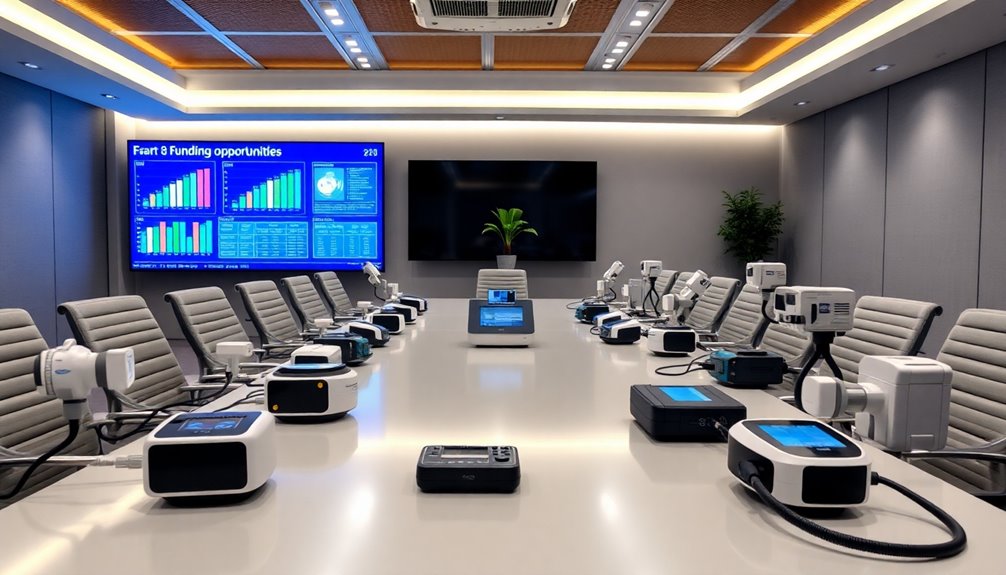
In the rapidly evolving medical device sector, government grants play a pivotal role in fostering innovation and supporting research. Agencies like the National Institutes of Health (NIH) and the National Science Foundation (NSF) allocate substantial funding to advance biomedical technologies.
With a budget of $5.5 billion annually, the NIH funds programs dedicated to areas like biomedical engineering, offering opportunities for you to tap into significant resources. The NIH's Intramural Research Program allocates $660 million each year, while the NSF's Engineering Directorate has historically funded bioengineering research at around $12 million.
Small businesses also benefit from the Small Business Innovation Research (SBIR) program, which supports innovative projects with millions in funding. Notably, research focusing on medical device applications for conditions like heart disease and cancer receives robust backing. Additionally, investments in injury prevention strategies are critical given that injuries rank as the fourth leading cause of death in the U.S., particularly for ages 1-44.
These grants not only help develop new technologies but also aim to address critical health challenges, potentially saving costs related to serious injuries. With federal funding on the rise, especially due to recent stimulus efforts, now's a great time for private investors to consider how government grants can bolster your investments in the medical device industry.
Impact Investors

With the medical device market poised for significant growth, impact investors are increasingly drawn to opportunities that align both financial returns and positive social outcomes.
As the global medical devices market is expected to reach $671.49 billion by 2027, you can leverage this growth while contributing to improved healthcare access and quality.
The rising prevalence of chronic diseases drives demand for innovative medical devices, making this sector ripe for investment.
You'll find that emerging technologies, such as AI and the Internet of Medical Things (IoMT), are set to transform patient care. The market for IoMT data is projected to grow to $187.60 billion by 2028, highlighting the potential for profitable investments in this area.
With 69% of healthcare organizations adopting AI and the IoMT market projected to grow to $187.60 billion by 2028, your investments could play a pivotal role in these advancements.
North America currently holds a significant share of the market, but emerging regions like Asia Pacific present rapid growth opportunities.
By focusing on sustainable practices and aligning with environmental, social, and governance (ESG) goals, you can make a lasting impact.
As healthcare expenditures rise globally, your investments in medical devices can't only yield financial gains but also foster equitable healthcare solutions.
Recent Capital Raises

Recently, medical device startups have been attracting significant venture capital, signaling strong investor confidence in innovative healthcare solutions. One notable example is Nalu Medical, which raised $115.06 million in Series E funding, focusing on neuro-stimulation devices for chronic pain.
Rivermark Medical also made headlines, securing $30.04 million for its minimally invasive urinary function device. Auvi Labs gained traction with funding aimed at developing a remote monitoring device for dialysis patients, while Ventis Medical raised $3 million to enhance ventilator access. The increased investment in healthcare technology and devices reflects the growing demand for non-invasive diagnostic solutions.
These startups showcase a commitment to improving patient outcomes. Moreover, SOBR Safe attracted $8.2 million for its non-invasive alcohol detection technology, emphasizing safety.
Ikonisys and Laxmi also secured private placements, focusing on diagnostic equipment and wearable glucose monitoring, respectively. PathwaysGI's innovative AI software platform for colonoscopy evaluations further highlights the ongoing investment in medical technology.
With these substantial capital raises, it's clear that the medical device sector is ripe with opportunities for private investors seeking to make a meaningful impact in healthcare. The momentum in funding not only supports innovation but also paves the way for advancements in patient care.
Frequently Asked Questions
What Is the Typical Investment Horizon for Medical Device Opportunities?
The typical investment horizon for medical device opportunities varies based on the stage of funding.
For seed funding, you're looking at several months to a few years.
Venture capital usually spans 5-7 years, focusing on growth potential.
Strategic investments might extend longer, aligning with company goals.
Later-stage and private equity funding often targets several years with mature companies.
Understanding these timelines helps you strategize your investment approach effectively.
How Do I Evaluate the Risk of Investing in Medical Devices?
To evaluate the risk of investing in medical devices, you should analyze market and regulatory hurdles, like FDA approvals and competition.
Assess technological risks, including potential obsolescence and user adoption challenges.
Consider financial aspects, such as development costs and funding stability.
Lastly, pay attention to clinical and safety risks, ensuring devices demonstrate efficacy and don't pose safety concerns.
A thorough due diligence process will help you identify and mitigate these risks effectively.
What Are the Exit Strategies for Medical Device Investments?
When you invest in medical devices, several exit strategies can maximize your returns.
You might consider a sale to a larger company, which often acquires innovative startups.
Alternatively, an IPO can provide liquidity and attract public investment, though it requires solid performance.
Mergers and strategic partnerships can enhance growth potential, while private equity firms may restructure and resell your investment for profit.
Each strategy has its own risks and rewards, so choose wisely.
Are There Specific Regulatory Challenges for Medical Device Startups?
Yes, there are specific regulatory challenges for medical device startups.
You'll face unpredictable approval timelines, often requiring extensive documentation and adherence to evolving regulatory policies.
Limited resources can make it tough to navigate this landscape, especially without expertise in regulatory affairs.
Engaging with regulatory consultants early on can help you identify hurdles and optimize your strategy, ensuring you maintain compliance and avoid costly delays in the certification process.
How Can I Diversify My Investments Within the Medical Device Sector?
To diversify your investments within the medical device sector, consider allocating funds across various segments like innovative startups, established companies, and venture capital firms.
Look for opportunities in emerging technologies such as neurostimulation and artificial hearts, while also investing in well-established players with a strong market presence.
This strategy not only spreads risk but also increases your chances of capitalizing on groundbreaking advancements and steady revenue streams in the healthcare industry.
Conclusion
In conclusion, exploring these top 10 medical device PPM opportunities can be a smart move for private investors like you. Each company brings unique innovations and the potential for significant returns. By considering partnerships with private equity firms, leveraging government grants, or attracting impact investors, you can amplify your investment strategy. Don't miss out on the chance to be part of the evolving healthcare landscape—invest wisely and watch your portfolio grow!

